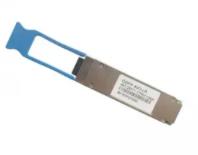With the development of the network and the advancement of technology, many fiber optic component manufacturers have appeared in the market, trying to grab a share of the network world. Since these manufacturers produce a variety of components, their goal is to make high-quality and mutually compatible components so that customers can mix various components from different manufacturers. This is mainly due to financial concerns, as many data centers are always looking for cost-effective solutions to implement in their networks.
Optical transceivers are an important part of fiber optic networks. They are converting and driving the fiber optic cable through it. They consist of two main parts: a transmitter and a receiver. When it comes to maintenance and troubleshooting, it’s important to be able to predict, test, and discover where problems can or have occurred. Sometimes, if the connection does not meet the expected bit error rate, we cannot tell at first glance which part of the connection is causing the problem. Could be a cable, transceiver, receiver or both. In general, the specification should guarantee that any receiver will work properly with any worst-case transmitter, and vice versa, any transmitter will provide a signal of sufficient quality to be picked up by any worst-case receiver. Worst-case criteria are often the hardest part to define. However, there are usually four steps to test the transmitter and receiver parts of a transceiver.
When testing the transmitter section, testing includes testing the wavelength and shape of the output signal. There are two steps to testing the transmitter:
The light output of the transmitter must be tested with the help of several light quality metrics, such as mask testing, optical modulation amplitude (OMA), and extinction ratio. Test using eye diagram mask testing, a common method for viewing transmitter waveforms and providing information about overall transmitter performance. In an eye diagram, all combinations of data patterns are superimposed on each other on a common time axis, typically less than two bit periods wide. The test receiving part is the more complex part of the process, but there are also two test steps:
The first part of the test is to confirm that the receiver can pick up the poor quality signal and convert it. This is done by sending poor quality light to the receiver. Since this is an optical signal, it must be calibrated using jitter and optical power measurements. Another part of the test is to test the electrical input to the receiver. During this step, three types of tests must be performed: eye mask testing to ensure a sufficiently large eye opening, jitter testing to test certain types of jitter amount and jitter tolerance testing, and testing of the receiver’s ability to track jitter in its within the loop bandwidth.
Post time: Sep-13-2022


